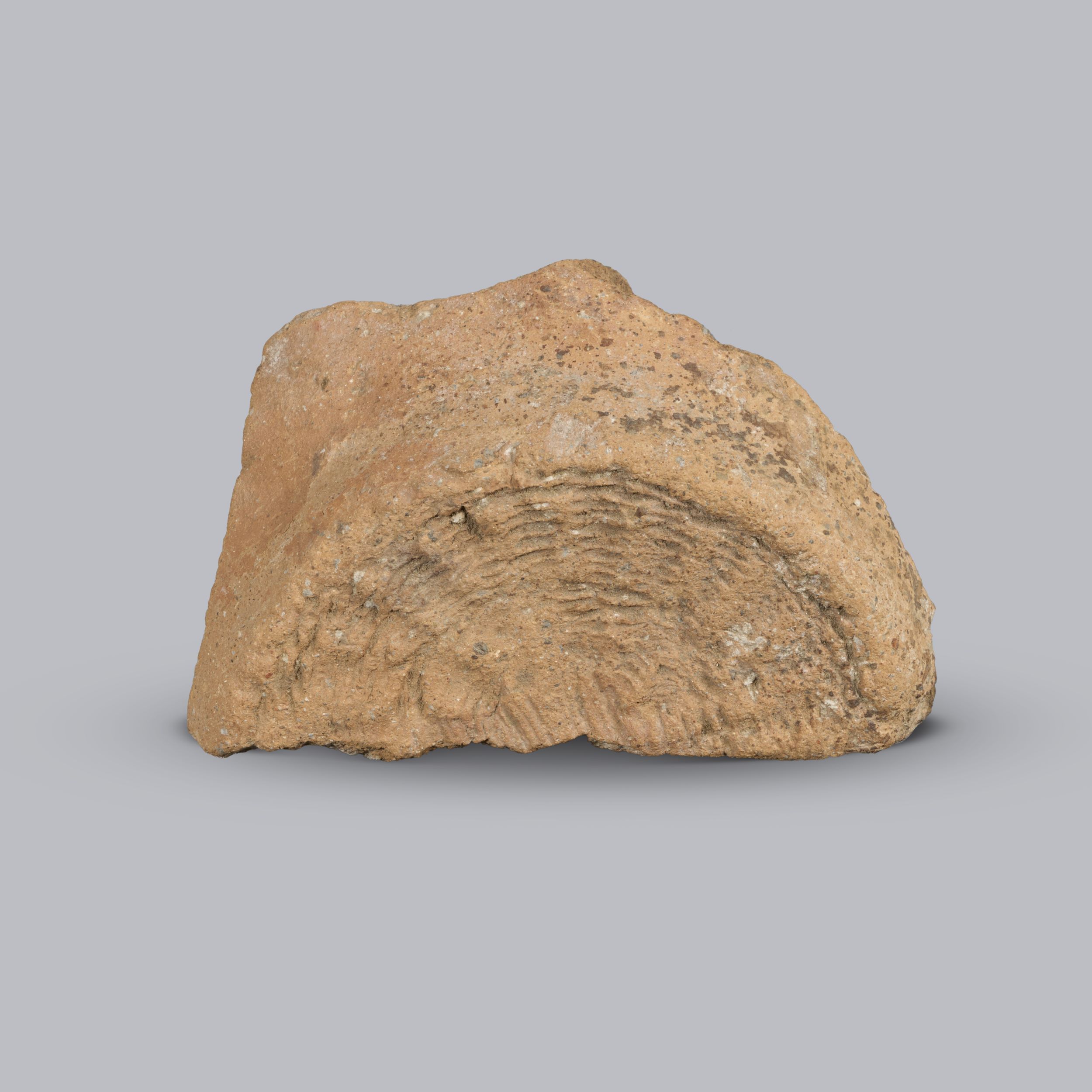
Vessel Base with Mat Impression [Gr250]
Later Local, c. 2200–2000 BC
Impressed terracotta (H. 4.5 cm, W. 11.2 cm)
About half of the base is preserved, with a mat impression. The pattern has a distinct centre with raised lines radiating outwards to a circular wickerwork edge.
The impressed pattern would have been formed by placing the vessel on a woven mat before firing and while the clay was still damp. The mats were probably much larger than the vessels they imprinted. Although this type of decoration is found on various kinds of pots of this period, it is most commonly seen on larger pithoi and is never found on finer vases with painted decoration. Similar mat impressions have been found in pottery from Dacia, Northern Italy, and Crete, suggesting an exchange of ceramic technology between the Aegean and other parts of the Mediterranean in the early Bronze Age.
Provenance
Excavated at Phylakopi, Melos, c. 1899; Thomas Dinham Atkinson (1864–1948), by whom bequeathed to Winchester College in 1948.